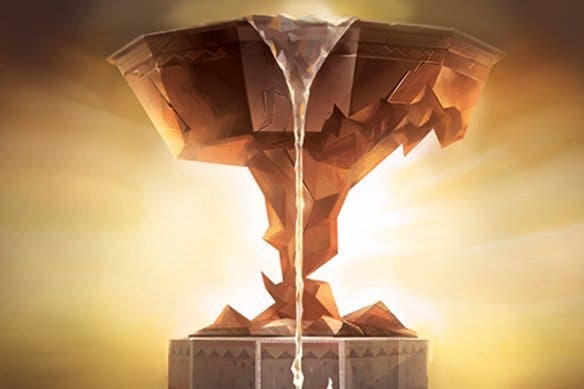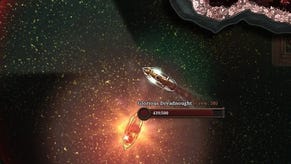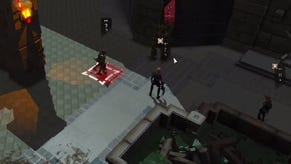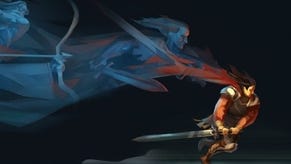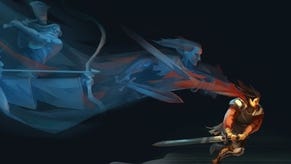Massive Chalice review
Gene dreamy.
You may not have heard much about Double Fine's turn-based strategy game, Massive Chalice. Unlike the studio's famous Broken Age, it didn't earn record-breaking sums on Kickstarter or have its development split in two and dragged out for an extra two years. Unlike Space Base DF9, it didn't launch in Early Access only to be abandoned without many of its promised features, leaving fans bitter.
Instead, it earned a modest sum through crowdsourcing, suffered no public setbacks during development and passed through Early Access with a full and complete feature set. It's the perfect example of How It Should Be Done.
That quiet confidence carries through to the game, which takes a beloved genre, delivers on all the basics with aplomb and then layers the sort of smart, leftfield ideas that Double Fine specialises in on top. You're cast as a nameless immortal entity, watching over a small but vibrant fantasy kingdom. The land is under attack from a monstrous race known as the Cadence, but to help you repel them you'll have guidance from the Massive Chalice of the title. Just like the classic optical illusion in which a silhouette of a vase can suggest two faces, so this enormous cup speaks with two personalities and provides the energy needed to support your defensive campaign.
The big difference here is the scale over which that campaign takes place. You have 300 years to wait until the Chalice is fully charged, and can wipe out the Cadence. That's three centuries during which you must maintain your borders, with only five heroes to hold the line.
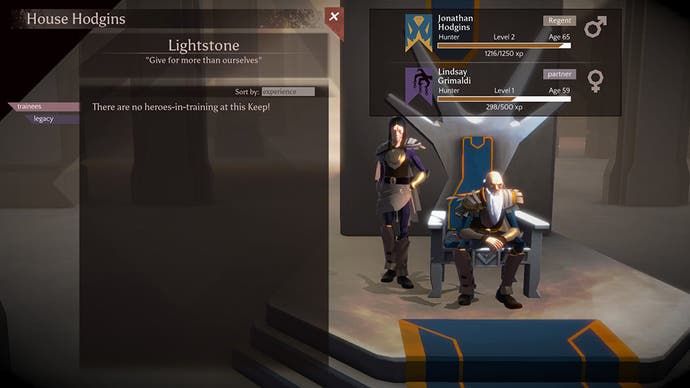
With such a long time span to endure the siege, that roster of five heroes goes through a lot of changes. This is a game built around the passage of time, and the permadeath cost that comes with it. The heart of the game is the timeline itself, accelerated with a trigger press and automatically paused whenever something happens that you need to attend to.
It's a resource management challenge, essentially, although the resources in question are time and genes. It's up to you to ensure that there is a healthy stock of up and coming warriors to replace those that grow old and die (assuming they don't fall in combat, of course), but you need to keep an eye on more than just the battlefield. Each of your land's territories can hold a building, the construction of which takes years. Build a keep, anoint a monarch from your ranks, choose a partner for them and they'll start producing babies, hopefully inheriting the useful traits of their parents. Once those children reach 15 years old, they'll enter active service.
Characters are never perfect. Some will inherit weaknesses, both psychological and physical. At a young age they have more stamina, but less experience and wisdom. As they grow older, they'll have earned more skills through levelling up and will be more seasoned combatants, but will struggle to move and fight with the vigour they once had. Eventually, your best heroes will need to be retired - either set on the throne of a keep to sire a new generation, or else sequestered as stat-boosting Scribes or experience-enhancing Standard.
Once a character has been placed in a role, that's it: they're tied to that position until death and cannot re-enter active service. That means that one of Massive Chalice's biggest challenges is working out how best to use your population during their brief lives. It's tempting to keep a reliable fighter on the battlefield into their 60s, but that means a younger fighter isn't taking their place and levelling up. It also means that when they do get retired, whatever role you place your senior assets in will be short-lived. All that experience - and even powerful family relics - will go to waste if they die within a few years of being appointed to an influential position, or pass away without an heir.

The combat section of the game is where you find the more familiar turn-based strategy elements, though even here there are clever tweaks to the formula. There are only three core classes, for instance. Hunters are the most traditional; long range archers who can pick off the Cadence creatures from afar. Caberjacks are a tank-like class, armed with a handheld battering ram and able to absorb more punishment. Alchemists lob exploding flasks, and use their spiked launching devices as melee weapons up close.
It seems limiting, but in practice is anything but. Striking a good mixture of abilities is essential, and you can also broaden your options through breeding. By pairing off monarchs from different classes, you can raise soldiers with hybrid skills and evocative new titles such as Boomstrikers and Brewtalists. Each class has its own small skill tree, which opens up at set levels, but given the limited time each fighter has before old age catches up with them, it never feels restrictive.
Combat comes about periodically, as the Cadence muster their forces to attack two of your territories simultaneously. Each mission also offers a perk - a new warrior, or a reduction in your current research project. You can only ever defend one territory, however, and each territory can only suffer three successful attacks before it falls to the enemy permanently. It's as much about deciding which territory can afford to suffer a loss, as it is about deciding which perk to fight for or which battle is the most winnable with your current roster of champions.
Once on the battlefield, control is simple but flexible. Each character has two phases of movement. A golden outline shows how far they can move and still have enough energy to perform another action, such as an attack. Move the cursor beyond that and you'll see how far they can move if you don't mind their turn ending as soon as they arrive. It's always perfectly clear what your options are.
The Cadence themselves also offer some enjoyably fresh ideas. Enemy types include Lapses, floating blue phantasms which attack at range and will sap your character's XP along with their health. Take too many hits and you may find a treasured warrior forgetting everything they learned. Wrinklers, meanwhile, will age your characters prematurely - draining their most precious resource: time.

Other enemy types provide more specific battlefield challenges. Ruptures, for example, are suicide bombers who explode on death and leave behind toxic pools that will dissolve armour. Caberjacks have knockback attacks that are useful for keeping them away, but it still takes careful planning to prevent friendly characters suffering splash damage during Rupture encounters. Bulwarks, on the other hand, are hulking brutes which have armoured skin that comes into effect as soon as they take damage and lasts for the rest of the turn. Subsequent hits will only take off one health point, so you need to think long and hard about who will strike the first blow for maximum effect.
There's a basic fog of war system in place, and cover is similarly pared back. If you're behind an object, you can't be seen or hit. Although some scenery items can be destroyed, there's none of the partial cover seen in XCOM, for example. Enemy AI is robust but rudimentary, with creatures behaving according to type but easily bamboozled by barriers and chasms. Battles are mostly short, punchy affairs, played out on small or medium sized maps. The only annoyances are a twitchy camera that rotates in awkward hops, and the fact that you'll sometimes find yourself laboriously wandering around an empty map, looking for the last tiny fogged area containing a solitary enemy you need to defeat in order to finish the mission.
As with any game that monkeys around with the familiar rhythms of a beloved genre, your enjoyment of Massive Chalice will depend largely on your willingness to meet its bigger ideas halfway. Most notably, you need to accept that it's more about making the best of a flawed hand than building a perfect system. It's frustrating when your two most powerful warriors spawn a dim-witted weakling, but you have to make do. So much of what you're given to work with is random, and every pro has a significant con attached, but it's always your decision making that decides the larger, long term outcomes.
It's certainly a much tougher game than it appears, and in your first few games you can expect to get tripped up by the multiple aspects you need to keep in balance, leaving you with a shallow gene pool of new recruits or worse, no new recruits at all. The game could perhaps do a better job of representing the enormous amount of variables in play, but it's something that becomes easier once you've eased yourself in.
Basically, the game asks a lot of you, and demands that you pay close attention to every decision you make. While that makes for a steep learning curve, requiring deep thought is hardly the worst sin a strategy game can commit. Slyly funny, satisfyingly deep and yet slick and simple to play, Massive Chalice is a huge return to form for a studio that is overdue a comeback.
